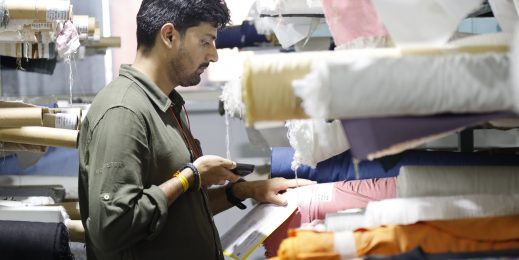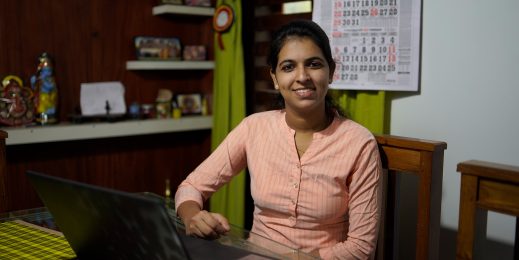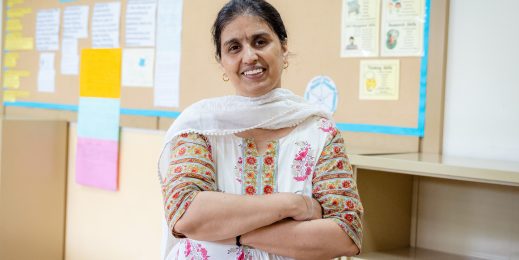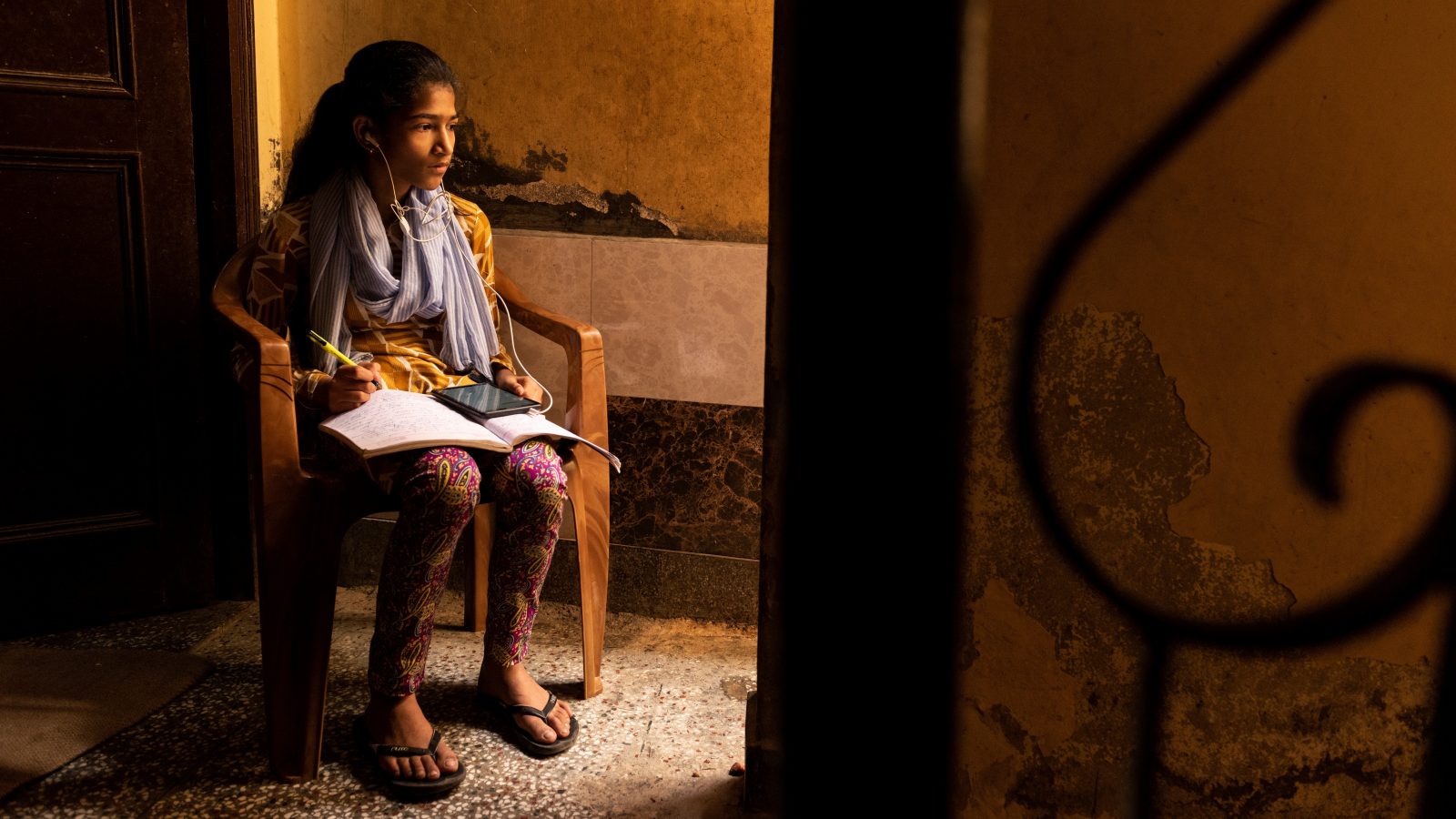
Schools in the pandemic: Seeking education equity for India’s marginalized kids
A nonprofit looks to technology so under-privileged students can learn in the classroom and remotely
When the whole of India went into a sudden COVID-19 lockdown last year Uzma Bano’s first thought was: “I won’t be able to go to school.”
Learning was something the 7th grader always looked forward to. The classroom was a daily escape from the confines of her home in the capital Delhi–a single 150-square-feet room she shares with her parents and elder brother, Shahi.
Uzma’s father Shakeel Ahmed earns around USD 6 a day as a carpenter or laborer when he can find shift work. With so little, surviving is tough. But unlike other poor families who often rely on their children to skip classes to earn extra cash, the Ahmeds always made sure their kids attended lessons.
“It’s the only way I can ensure they will have a better life than me,” says Uzma’s mother Rahmat Bano.
But their determination has been shaken by the pandemic lockdowns, which shuttered many schools and slashed incomes. While tuition at most state-run schools is free in India, many families facing poverty had no resources to switch to remote learning.
The experience of the pandemic has shone a stark spotlight on educational disparity–while most well-resourced private schools have been able to cope with COVID-19, most government and low-resource schools have struggled.

“We had to urgently find a way to bridge this digital divide,” says Aakanksha Gulati, chief program officer at Teach For India (TFI) a nonprofit that aims to deliver better education opportunities for all.
“We’ve known for a long time now that if we’re talking about educational equity for kids in our country, then technology has to be part of the answer. But the pandemic pushed us to realize that if our kids had to catch up, just some interventions here and there weren’t going to cut it.”
TFI runs a Fellowship that attracts fresh graduates as well as professionals from the private sector to bring new perspectives to education. As Fellows, they sign up to be full-time teachers for two years and TFI places them in government and low-income schools around the country.
Nowadays, the organization is developing solutions that blend classroom learning with remote learning to help communities with limited financial resources. To do so it’s working with decision-makers in the tech sector, like Farhana Haque, group director for devices at Microsoft India.
“During the pandemic we realized how privileged we were. While our children were attending classes online, so many others could not,” she says. “Microsoft’s mission is to empower every person and every organization on the planet to achieve more–so we asked ourselves what we could do as a company.”
While ideating with her team on what more could be done, they realized there were dozens of laptops lying unused at Microsoft India’s offices. The devices were given up after being used for demos and other purposes but could be used for teaching in schools. Her team reached out to TFI to see if Windows 10 devices with their built-in security features would be useful for their Fellows.
While the first batch of laptops were being refurbished to be sent to TFI, Haque asked her team what more they could do.
“We also realized it wasn’t just about giving hardware, it’s about what they can do with the machine,” she adds. “Which was when we thought about installing Microsoft 365 Academic license, which comes with Teams, Office 365, OneDrive, OneNote, and a host of other Microsoft software, and is available to educational institutes for free, for both teachers and students,” she recollects.
Among those who have been using these Windows 10 machines loaded with Microsoft 365 applications for their daily use is Anissha Aggarwal. She’s a former Microsoft India employee who took a break from her career as a corporate communications professional in 2018 to teach as a TFI Fellow.
“I’ve felt strongly about how education contributes to gender balance in our society for a long time but did nothing about it,” she says. “That changed around 2016 when I joined Microsoft. I discovered the Microsoft Education program and learned first-hand how they’re using technology to create a healthy ecosystem for students and teachers alike.”
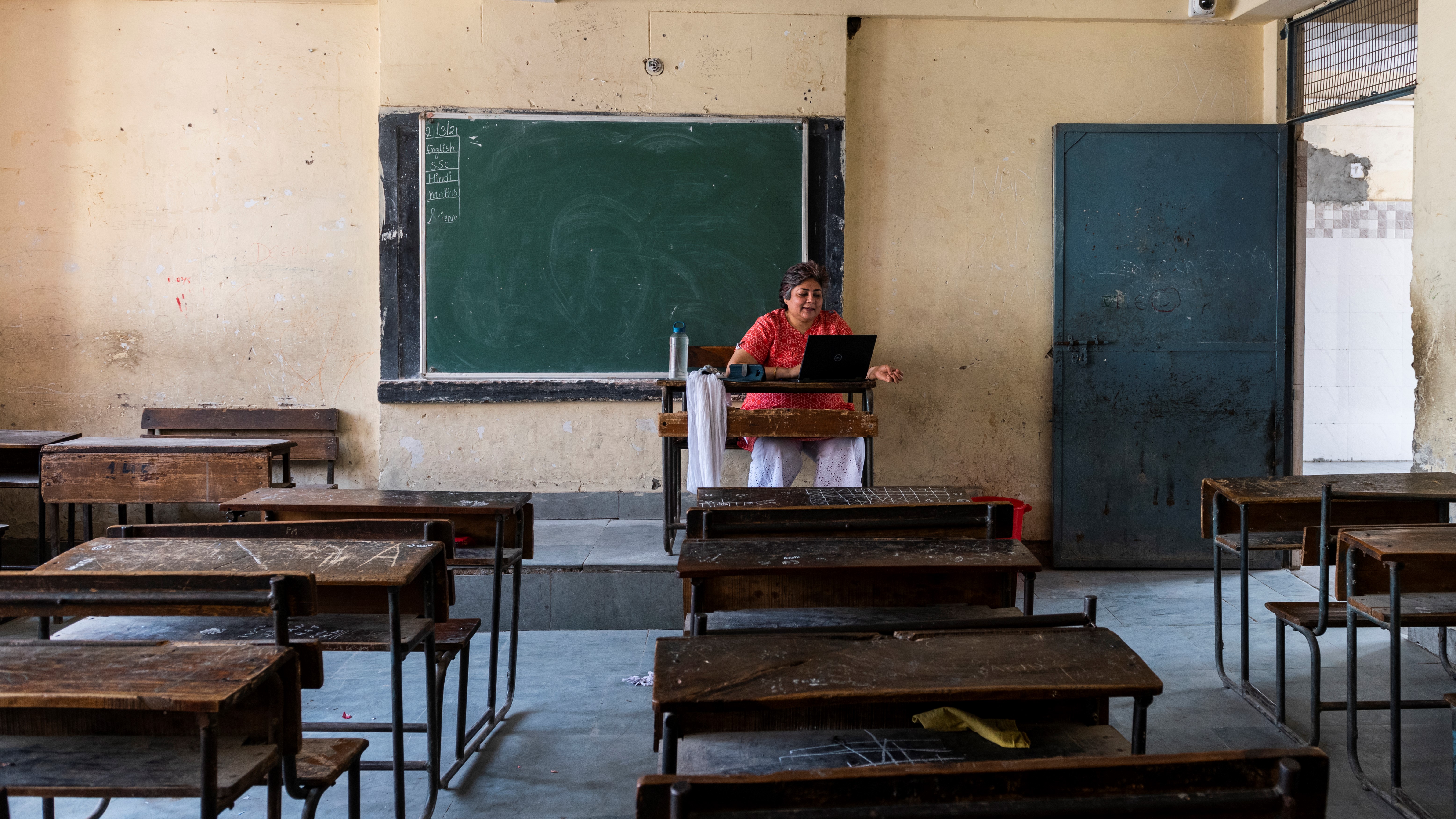
When the lockdown hit last year, Aggarwal was one of the five TFI Fellows working at Sarvodaya Kanya Vidyalaya Mehrauli No 2–Uzma’s school—and had big plans for her class.
Like many low-resource schools in India, this school holds all-girls classes in the morning and all-boys classes in the afternoon. As classrooms are shared this way every day, teachers have had to keep the walls bare and couldn’t store anything inside.
“I was looking forward to surprising my girl students when they came back for a new academic session last year,” she recalls. “My co-Fellow Anjali Malik and I had finally gotten a classroom that we could lock after school hours. A former Microsoft colleague had donated a projector and screen, and we were raising funds to fix broken benches and get the walls painted. Just when we were getting started, the lockdown was announced.”
Like some other schools, even her school initially switched to a video conferencing app to conduct their classes.
“We knew that our students don’t own computers. However, at least some members of the families, mostly fathers, did. Due to the lockdown, they were also at home, which meant our students could use their phones at most times,” she says.
It also helped that India has one of the cheapest high-speed 4G internet plans and users can get as much as 1.5GB data every day for as low as USD 3 a month.
“But we soon realized that we needed something beyond just a video conferencing app. Something that could help us carry out as many classroom activities as possible online, like conducting tests, assessing and tracking the students’ performance.”
Transitioning to Teams enabled Aggarwal to not just conduct classes online but also perform a host of other tasks with ease. More importantly, it empowered the students to access their assignments, homework, tests, and everything else they did in school from any device of their choosing.
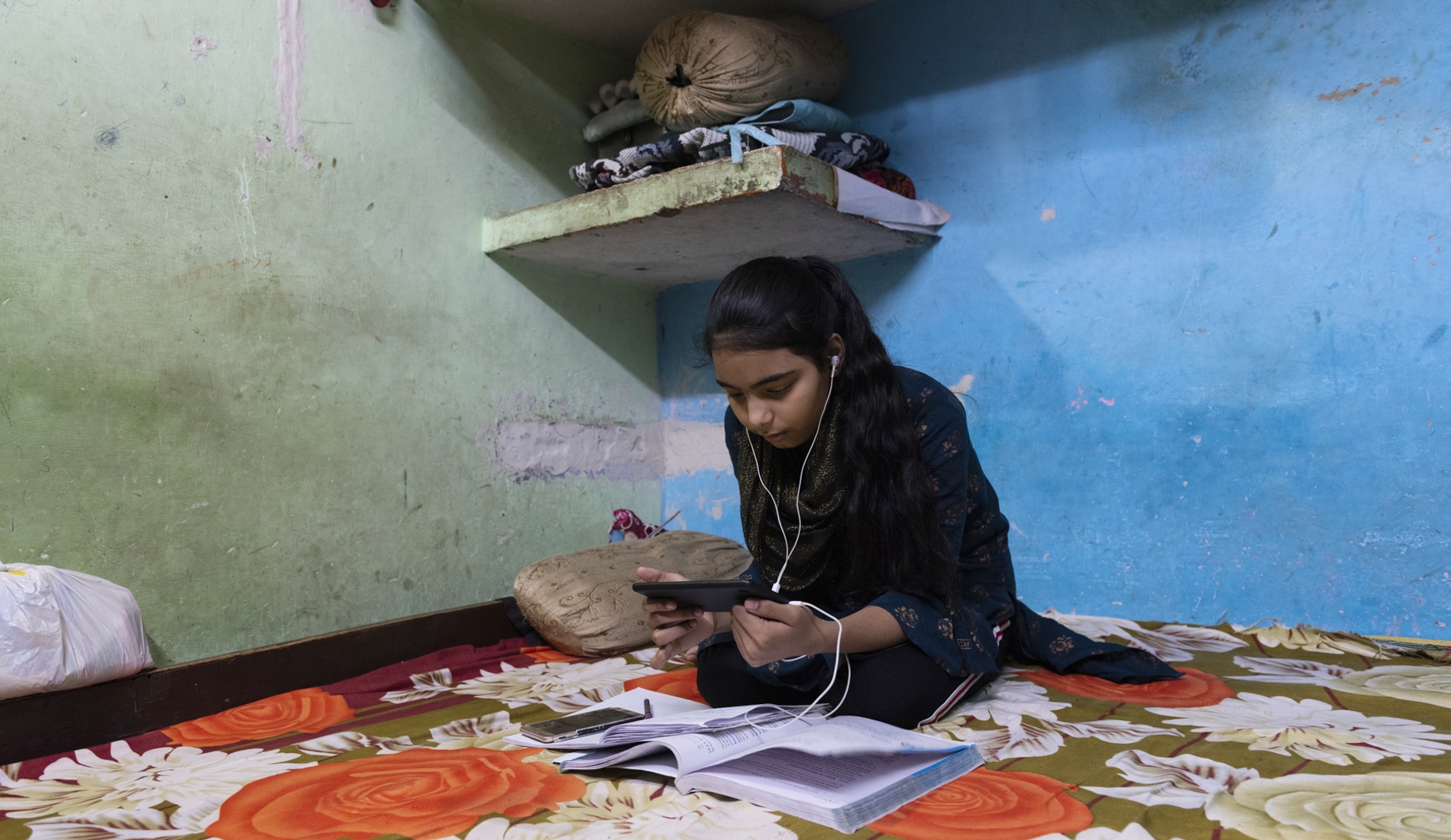
During the initial days of the pandemic, when classes were being held on a video conferencing app, Aggarwal used to share files on a group she created with her students on another messaging app. But they’d complain about not being able to access the files as they were using someone else’s phone on a particular day or someone deleted those files—a common scenario as one smartphone is shared by multiple people in the family.
“If the data plan runs out on the phone they’re using, they can now simply pick up from where they left off using anyone else’s phone in the family or the neighborhood. All they’d have to do is download Teams, log in and all their work would be exactly where they left it because it’s securely stored on cloud,” Aggarwal says.
On her part, Aggarwal took the Microsoft Innovative Educator certification to make the most of the new capabilities that Microsoft 365 and Teams offer for teaching. Now her students receive assignments on Microsoft Forms and Microsoft OneNote Class Notebook. These and several other apps are integrated into Teams, so they don’t have to download any other apps to complete their tasks.
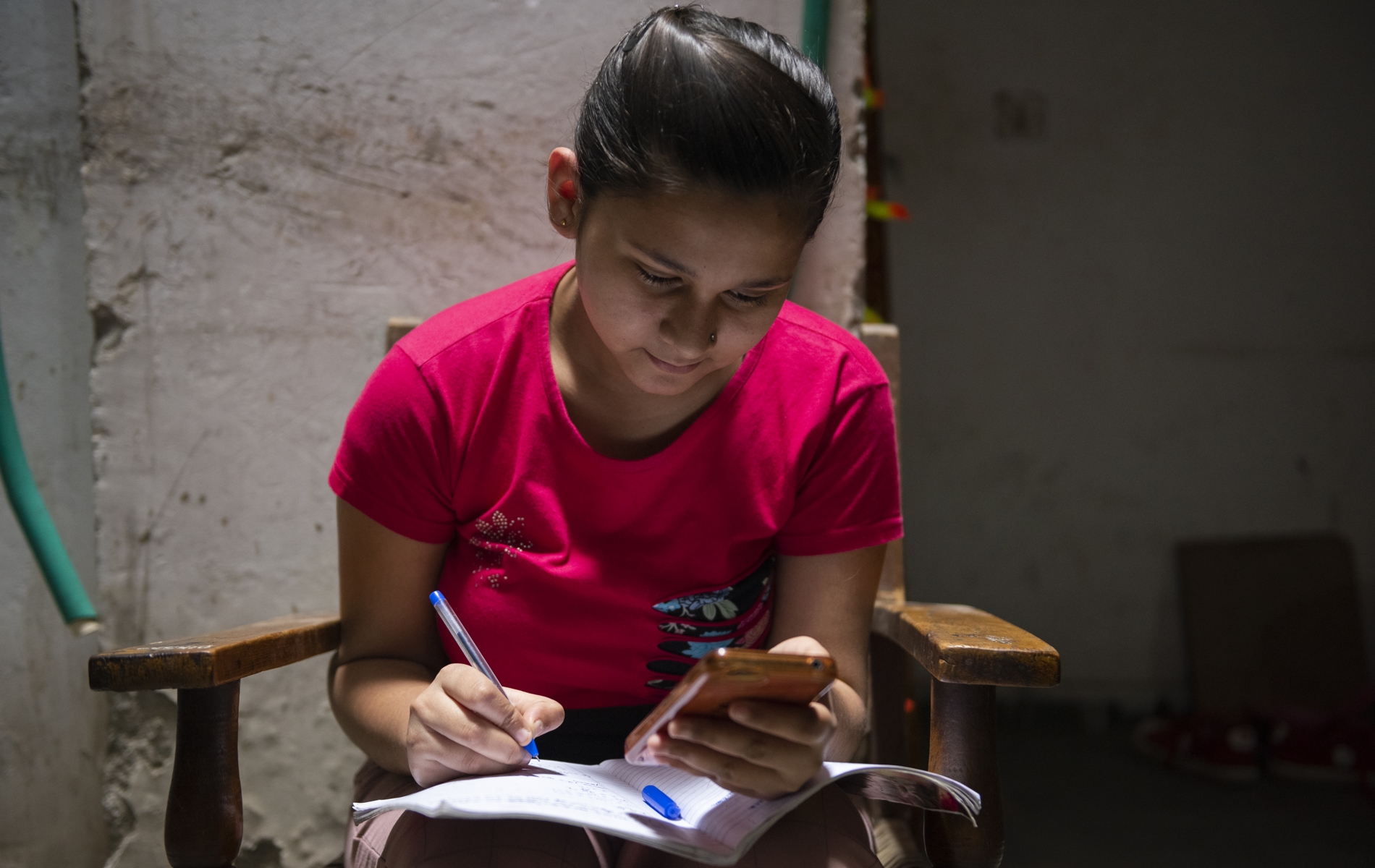
“Earlier if I lost my notebook, all my efforts would go to waste. That’s no longer the case,” says Diksha Mukesh, yet another Class 7 student of Sarvodaya Kanya Vidyalaya Mehrauli No 2.
The story isn’t very different on the other side of the desk either. With a Windows 10 device loaded with Microsoft 365 Academic license, TFI Fellows are able to do more for their students than what they could do even during pre-lockdown days.
“I am able to accomplish in an hour what I typically would have in four,” Aggarwal says.
That task could be something as basic as tracking her students’ attendance better or efficiently grading their assignments and keeping tabs on their progress.
Aggarwal uses Forms to give her students assignments, assess them using its many features and provide precise feedback. Similarly, by creating a rubric, she’s able to easily grade the assignments.
She tracks the attendance and assignment submission using Microsoft Insights and can view every student’s performance on a single Microsoft Grades dashboard, enabling her to personalize education for every student.
“It has helped me become a more data-driven decision-making teacher as opposed to a purely intuition-driven teacher. The best part? All of this is integrated into Teams!” she says.
Unlike the earlier video conferencing solution she was using, with Teams she’s assured her students find a safe space to interact with her and among themselves.
“Unless I invite someone, no one can enter while the online classes are underway or afterwards,” she adds.
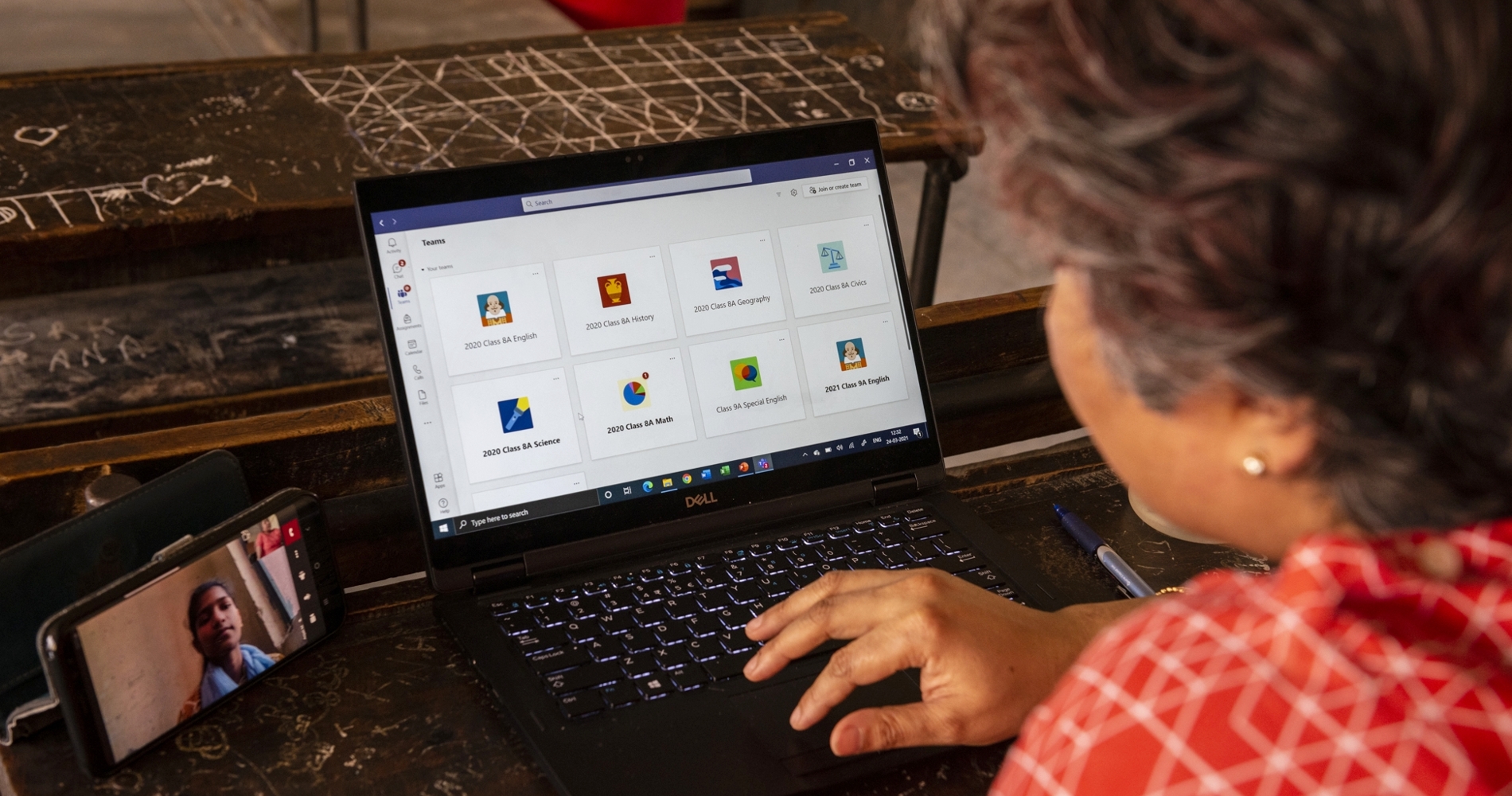
With access to Windows 10 devices, other TFI Fellows are now able to add more dimensions to their students’ education based on their own educational qualifications.
Sarthak Thapliyal, is an electronics and communications engineer who joined TFI right after graduating from the Vellore Institute of Technology, an elite engineering college. He’s using his Windows 10 device to help his Class 9 students at Acharya Tulsi Sarvodaya Bal Vidyalaya Chhatarpur, in Delhi participate in robotics and coding workshops.
“We use the laptop to upload the code on to an online module and program it to perform basic tasks. Sure, it’s a lot of fun for the kids but it’s also helping them pick up 21st century skills,” he says.
And that’s the big takeaway from the pandemic too.
“The way of teaching has changed completely and forever for the schools that we support,” TFI’s Gulati says. “Blended learning is here to stay, and students need to be equipped to adjust in such an environment, which means they’d be learning (in-person) in classrooms but also with technology, outside of classrooms. That’s where our focus will have to be.”
Top Image: Uzma Bano attending an online class outside her home–a single 150-square-feet room in Delhi, which she shares with her parents and elder brother. (Photo: Amit Verma for Microsoft)
Abhishek Mande Bhot is an independent writer and editor covering news, lifestyle, and luxury for publications in India and the US.







